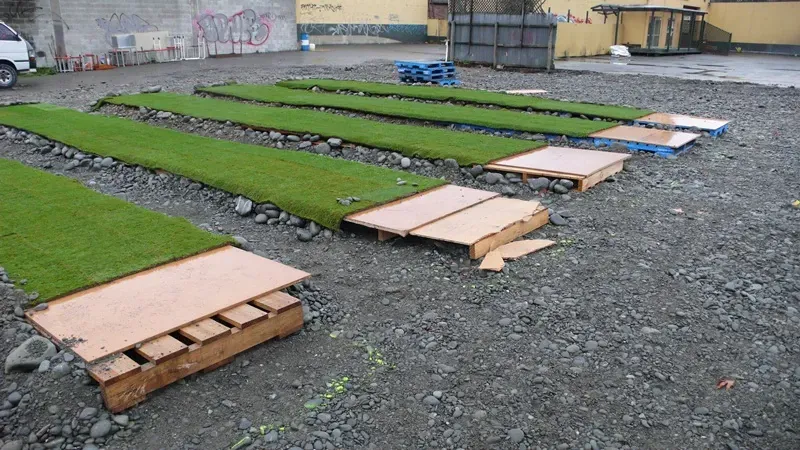CPIT students fill in 'gaps' in ChCh city

The CPIT/ Gap Filler collaboration – 23 to 27 May – MR2.
Gap Filler rolling with CPIT students’ ideas
A ‘50s style bowling alley and a futuristic cityscape - two vacant sites near CPIT’s Madras Street campus received very different treatments from architectural design students this week.
The 80 CPIT students were responding to a challenge from the Gap Filler team to temporarily populate empty lots at the former Jet Set Lounge site on St Asaph Street and the former Hi-tech Sheet Metals site at 19 Ferry Road (both right near CPIT in Christchurch city) with a creative project. They had just four days to develop a concept, build it and publicise it before the sites were opened to the public at 5pm today [27 May].
“Both the designs we chose are vastly different and interesting. There were so many great ideas, some of them very thoughtful and compelling,” Gap Filler co-creator and director, Coralie Winn said.
“The design chosen for the former Hi-Tech Sheet Metals [Ferry Road] site will see old furniture from the CPIT warehouse converted into a cityscape for visitors to write upon with seating nearby created from pallets, drums and hay bales. It references places lost - such as Poplar Lane, as well as Hagley Park, and the future city that is on everyone's mind at present.”
The St Asaph Street site, meanwhile, has been converted into a temporary, interactive ten-pin bowling installation.
“The Jet Set design refers back to what that site was - a place for entertainment, fun and play. The students wished to create, using pallets and other materials, raised bowling lanes for outdoor ten-pin bowling.
They seem to be working towards a 50s theme for their opening event this Friday,” Winn said.
Last Monday students were introduced to the Gap Filler philosophy, which facilitates temporary creative projects on sites awaiting redevelopment around Christchurch to bring vibrancy to empty spaces for communities and opportunities to artists in the wake of the earthquakes in September and February. This is the fifth Gap Filler collaborative project, but the first time students have been handed creative control.
“This has been an excellent design challenge for our students in terms of working on a real project within a very limited timeframe,” Keith Power, CPIT Head of School of Architectural Studies said. “It’s interesting, it’s different and it’s a direct response to the situation the city now finds itself in.”
Both sites can be seen until Thursday 2 June, when they will be passed back to the property owners for future development.
For more information about Gap Filler see: www.gapfiller.org.nz
ENDS